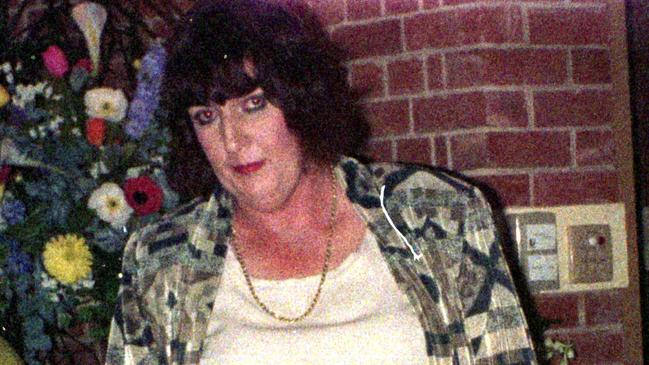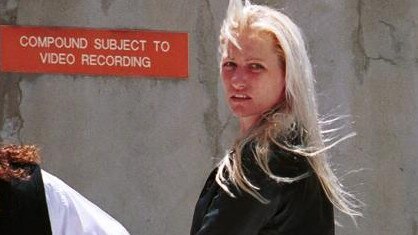Gruesome sins of the Adelaide’s strawberry patch killers
ADELAIDE has a deserved reputation for gruesome crimes but, at the heart of them all, are real people falling victim to unexpected cruelty, as chief court reporter SEAN FEWSTER reveals in this extract from his bestseller, City of Evil.
True Crime
Don't miss out on the headlines from True Crime. Followed categories will be added to My News.
- The bizarre crimes behind myth of ‘serial killer capital’
- The Pirjo Kemppainen murder: The two teenage killers
SHE was used to the pain of heroin withdrawal, that was nothing new — she’d grappled with the ravenous, gnawing drug hunger most of her life.
SHE was used to the pain of heroin withdrawal, that was nothing new — she’d grappled with the ravenous, gnawing drug hunger most of her life.
This unfamiliar pain was unbearable.
It was the sting of conscience, deep in her soul, and it refused to die down.
It was Remembrance Day 2001, and Donna Lee Casagrande could no longer forget the sins she had committed.
Distressed and dishevelled, the junkie staggered into a police station in Redfern, NSW, and said she wanted to talk about a murder.
Homicide detectives Robert Allison and Malcolm Lanyon led the blonde prostitute into an interview room and started its recorders.

For more than an hour they listened as Casagrande spoke — alternately hysterical and chillingly calm — of slapping, torturing, smothering and stabbing a man to death.
The victim, Casagrande said, was a truck-driving prowrestler transvestite — her accomplice was her lesbian lover and fellow prostitute.
Remorse crept into her tone as she spoke of the victim’s immense weight; his corpse was too heavy, she explained, to load into his own four-wheel drive for disposal.
And so the women had hacked the cadaver to pieces, de-fleshed each segment and buried the body fat in the victim’s beloved strawberry patch.
Loading the torso pieces into a car, the lovers dumped them at several different locations, pausing only to drop the cross-dresser’s head and arms in a rubbish bin and set them on fire.
Having finished her sickening tale, Casagrande glared hungrily at the detectives.
“All I want is my methadone,” she said.
Though her confession had been made in NSW, Detectives Allison and Lanyon were in no doubt Casagrande could only have committed such a heinous killing in Adelaide.
A SAD TALE
The life and death of John “Joanne” Lillecrapp was, on the surface, bizarre and surreal — perfect tabloid fodder.
No newspaper editor alive could resist a headline like “Lesbian Prostitutes Decapitate and Dismember Transvestite Pro-wrestling Truck Driver”.
Beneath it all, however, the tale is even sadder than it is twisted.
The undoubtedly horrific, inexcusable crime centred on one lonely man’s desire for friendship and acceptance.
In 1993, Lillecrapp moved into a house on Norton St, Angle Park, a suburb west of Adelaide.
Like the western suburbs of Melbourne, it is an area that has long been home to Asian families and refugees from African nations.
Violence is common, as is the death of young people in high-speed car accidents.
“It’s best to keep to yourself around here,” one resident said in 2001.
“You keep out of trouble that way.”

Initially the locals called him “Tex” because he wore large cowboy hats.
Soon they got to see the woman behind the man — Lillecrapp had taken up cross-dressing two years before his arrival.
One would think that he would have experienced enormous difficulties with his neighbours, but nothing could be further from the truth.
He felt most comfortable when surrounded by his peers at the Parks Community Centre, just a few kilometres from his home.
He considered them part of his extended family and volunteered many hours of his time driving the centre’s free bus service.
The African, Vietnamese and Indian communities looked to him for advice, help and support.
He entertained them by taking part in professional wrestling bouts, playing both the hero and villain for the crowd’s benefit.
Above all else, he insisted everyone call him Joanne.
NOT YOUR AVERAGE BLOKE
“He wasn’t your average bloke,” Lillecrapp’s brother, Ron, conceded in 2003.
“But he helped the community and he was a worthwhile member of the community.
“If anyone needed help, he would be there … the people at the Parks Community Centre thought the world of him.
“He found a place to belong there, something that was missing from other areas and times in his life.
“And while I wasn’t always close to John, if something were to happen I would have been there for him — that’s what brothers are for.”
A photograph of Lillecrapp taken on the night of his brother’s 1994 wedding sums the man up well.
His dark wig and make-up are immaculately applied, his legs are swathed in stockings and his wrists and neck adorned with simple gold jewellery.
In a plain white top, dark green miniskirt, stiletto heels and colourful jacket, Joanne Lillecrapp is the sort of 50-year-old woman one would pass in the street without a second glance.
But looking the part and being tacitly accepted by his neighbours was not enough.
Lillecrapp felt his life was one of solitude, and he went further and further afield seeking what he felt would be true acceptance — the understanding of those like him, who shared his outlook and beliefs.
A KIND HEART’S DOWNFALL
During a trip to Sydney in 1996, he met Casagrande.
Drug addiction and abuse were the defining factors of her life, ruining any chance of stability and taking a vicious toll on her long-term health.
Big-hearted, generous and full of empathy for a fellow “lost soul”, Lillecrapp opened his home to Casagrande, vowing to aid her rehabilitation.
It was a decision that did not sit well with his family — especially when, during a visit with Ron and his wife, Lindsay, Casagrande retired to their driveway
to shoot up heroin.
“That was Joanne’s downfall, after that,” Lindsay said in 2003.
“We were worried about him, but he wanted to live his life the way he did.
“They seduced him into believing he had friends and that people accepted him and wanted to be around him.
“We thought it would end in theft, that they’d rip him off — but we never dreamt it would end like it did.
“We thought we could see what was coming and we knew it was going to be terrible — but not to the extent it was.”
To learn more about the case, watch City of Evil at 9.30pm tonight on Channel 9 and 9 Now.



